
4-Xtremes – Part 18: Sliding around on the Peloponnese peninsula
Series: 4-Xtremes – The World Tour
On the Peloponnese peninsula the Kammermanns prove their skill at the wheel – and experience a lot more besides. But will they be able to say “Αντιο σας” to Greece and continue their “World Tour”? Read for yourselves!
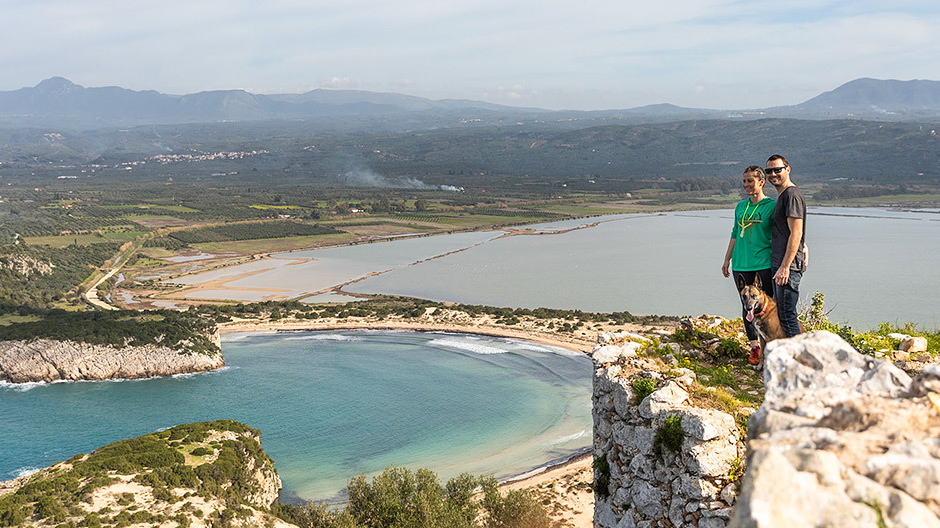
Expedition on foot – Andrea and Mike didn’t enjoy many good-weather days like this on the Peloponnese.
800 litres of Diesel were just enough to explore the Greek mainland. We used quite a lot of it over the last few weeks on the Peloponnese. This large peninsula south-west of Athens that looks like a hand with its fingers spread also had a few driving challenges up its sleeve. But more on that later.
If like us you come from the North, you must cross the Rio-Andirrio bridge to get to the Peloponnese peninsula. Although “must” is not quite the right expression. Because it’s a real experience to cross the cable-stayed bridge which is more than two kilometres long and has the Gulf of Patras on one side and the Gulf of Corinth on the other.
Camping at its best – on Golden Sand Beach on the Peloponnese.
Hiking in winter coats.
We had thought that in Greece the winter temperatures are always pleasant and the sun forever shines. And we did have a few lovely days in January. However we now know that that is not a given: recently constant rain has been accompanied by winds so we needed our winter coats every day. Despite that we were still able to hike through the pinewoods behind the beaches.
On the third day we had to use our traction plates, though not for us: a family had got their pick-up stuck in the sand right up to the chassis. But with a bit of shovelling, pushing and the plates underneath, we got the car out first go.
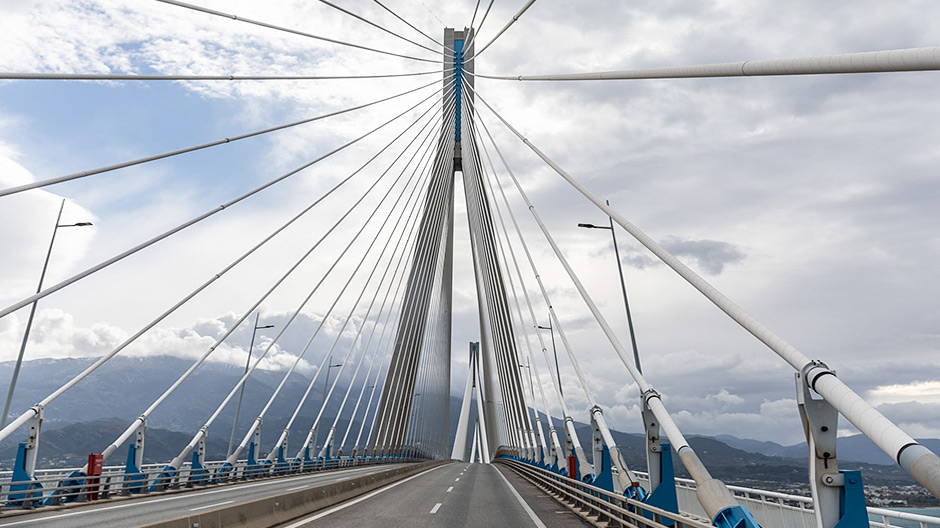
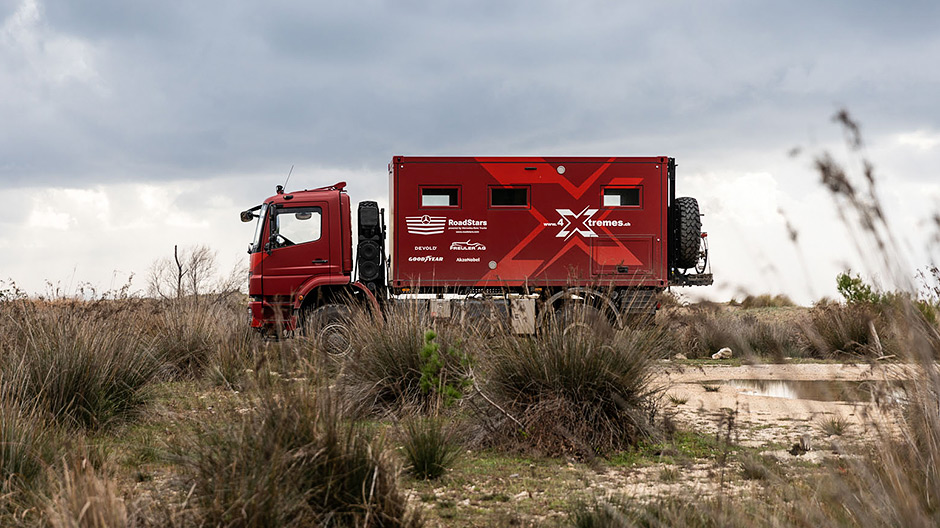
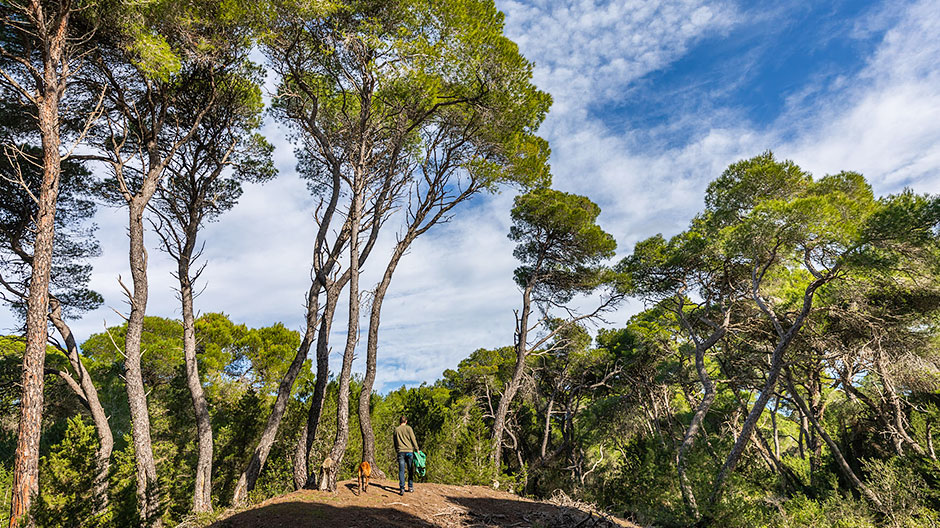
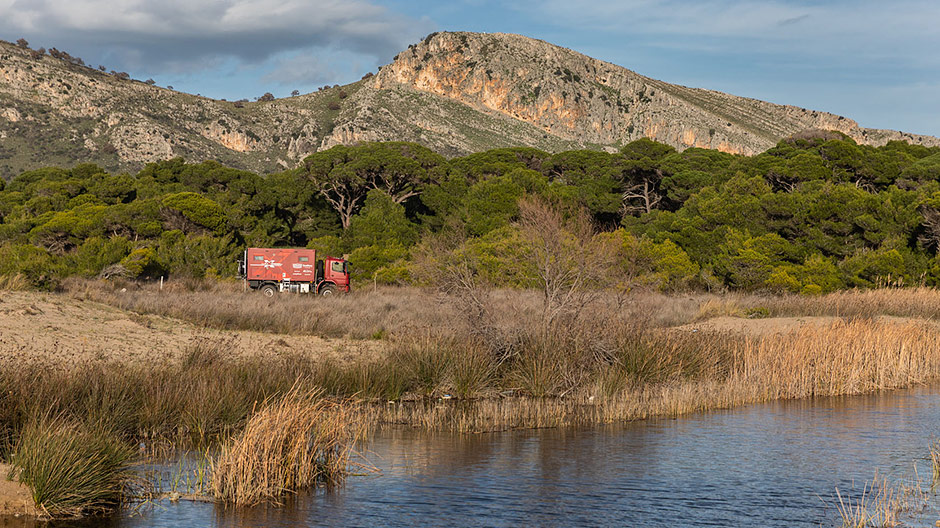
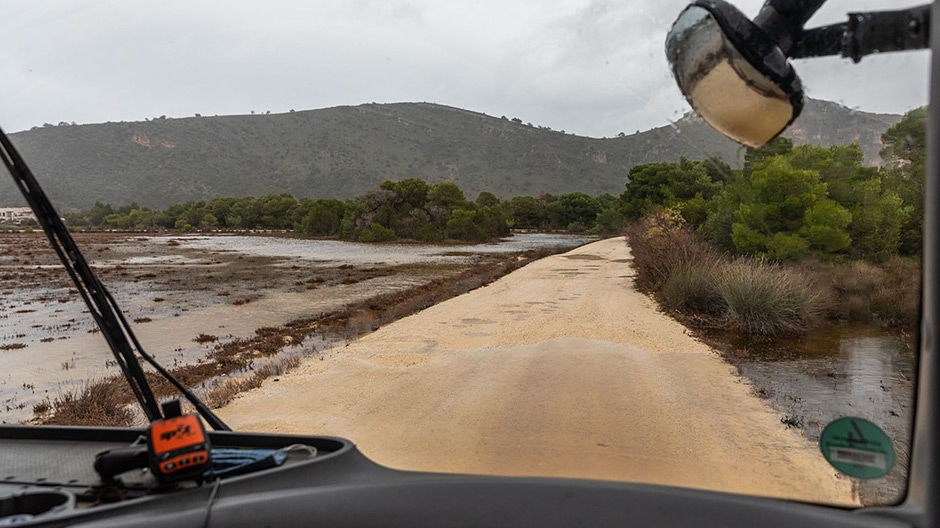
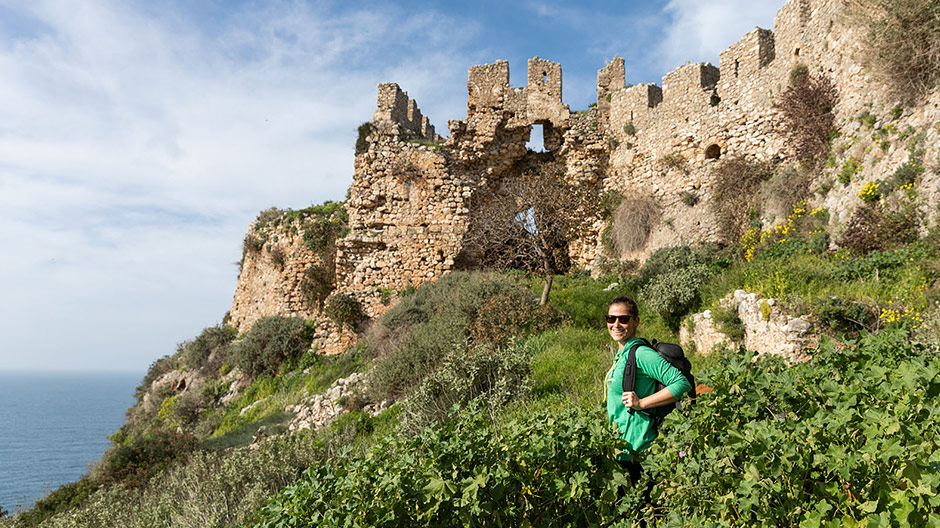
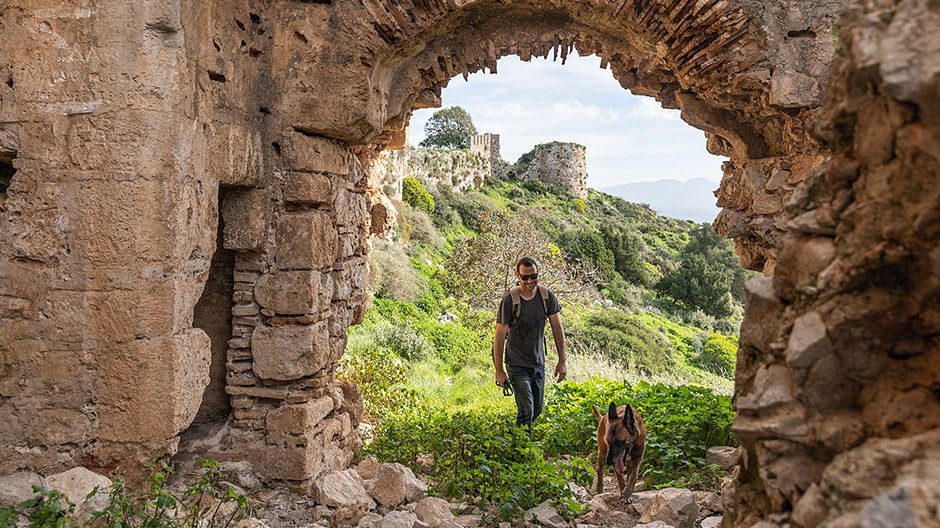
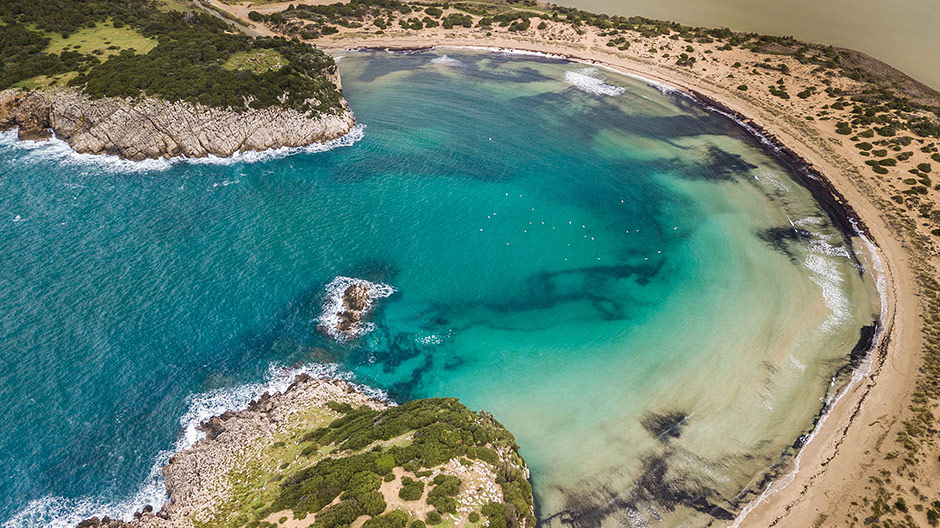
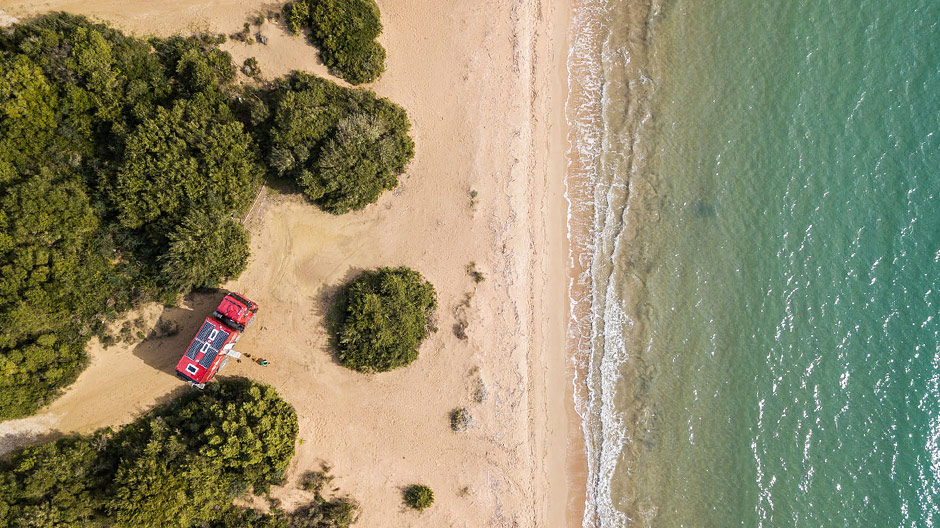
All-wheel drive activated at the last minute.
However, we got into a sticky situation once too, while driving through the mountains when the ground was soft – on a small road we slid into a ditch. Luckily, Mike reacted quickly and was able to activate the differential locks and the all-wheel drive on the Axor. There wasn’t even time to take a photo of the “accident”. It was still a close shave though.
In Messenia in the south-west of the peninsula we camped at the Voidokilia beach in the almost circular Ox Belly Bay – it’s probably the most beautiful place in Greece where we have set up camp. The Axor stood directly next to the water, protected from the wind by bushes so that we could even spend time outside in our t-shirts.
From there we hiked to the Navarino castle. It’s walls are in ruins, but you can still climb them to walk around the castle without having to struggle through the thicket in its interior. The ground falls away steeply from the walls so you can’t afford to take a wrong step.
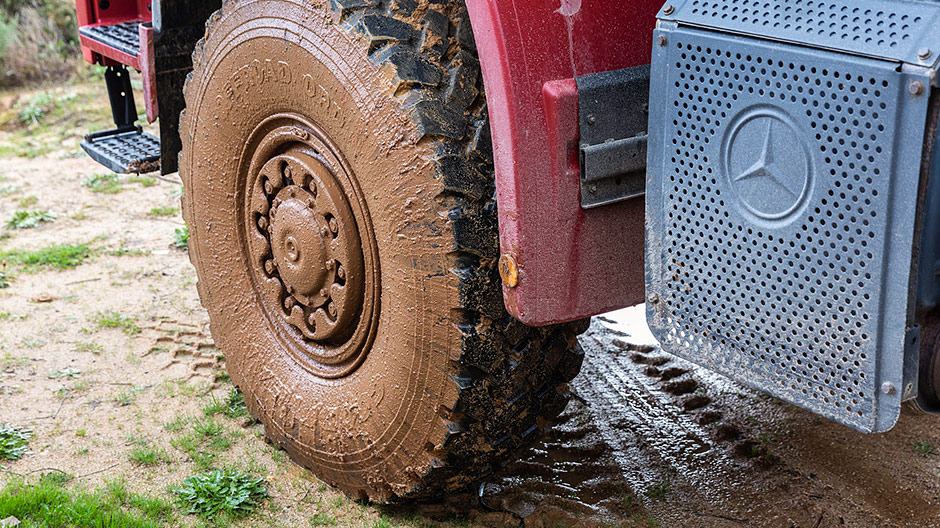
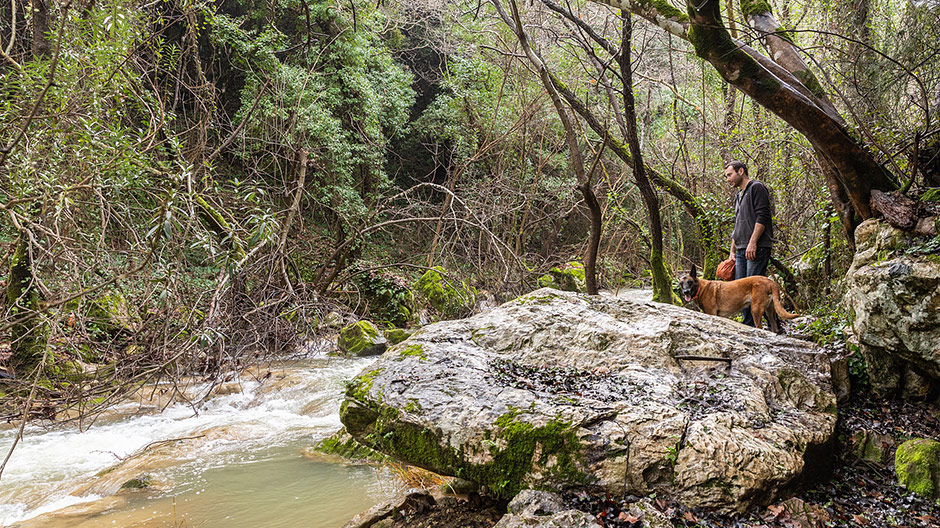
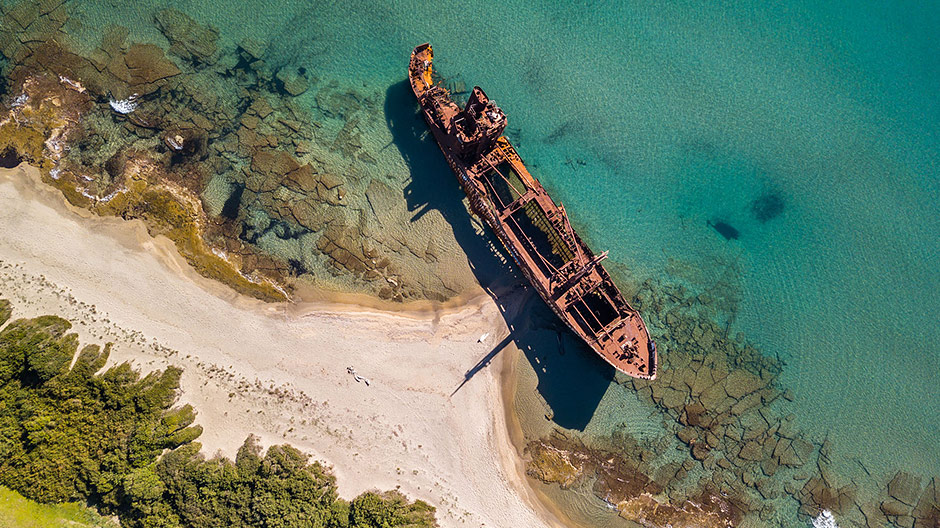
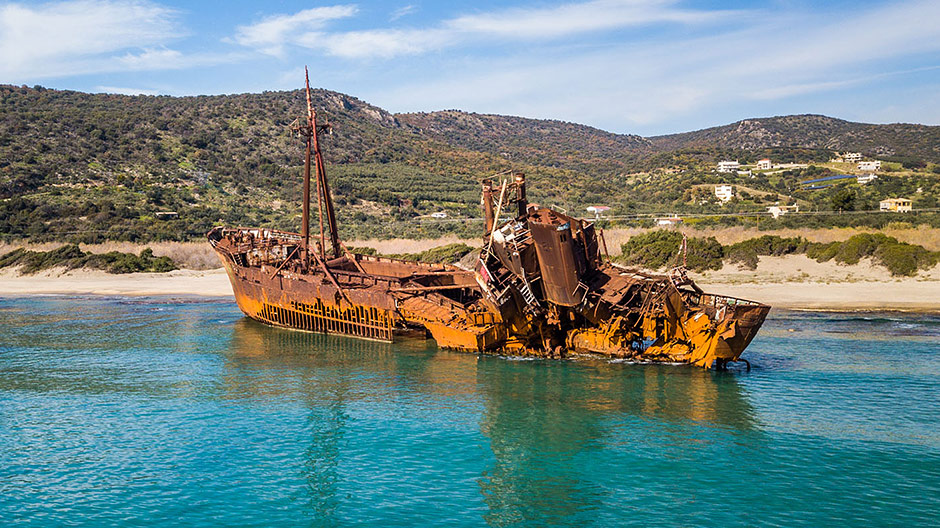
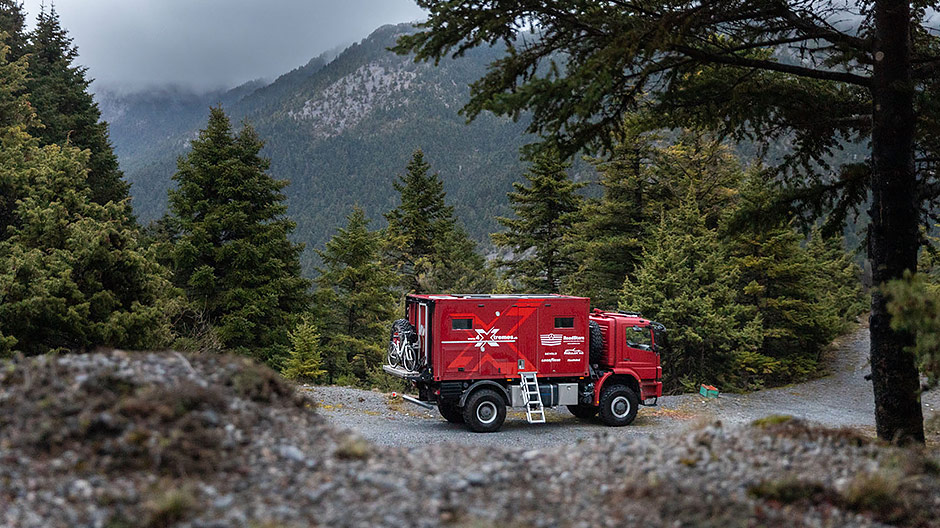
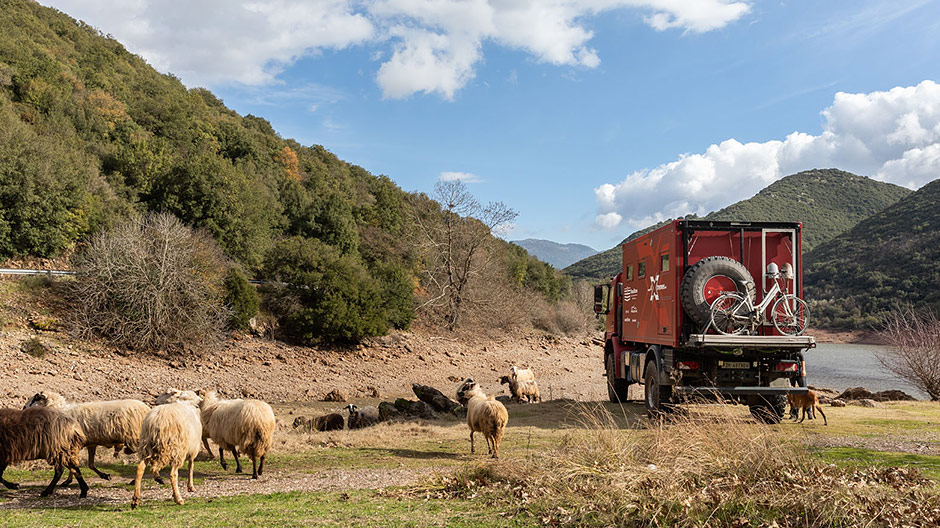
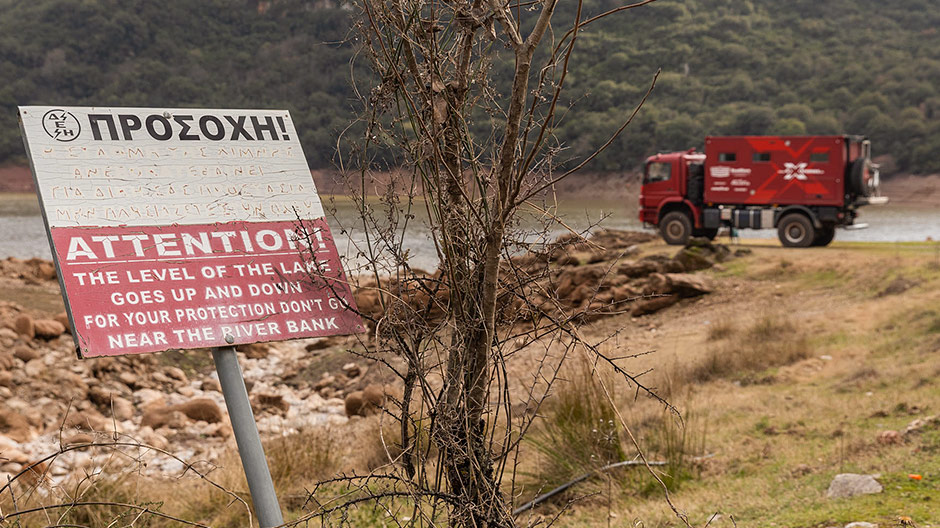
More than 50 camper vehicles at the beach.
As the days progressed, more and more people arrived at the Voidokilia beach in vans, camper vans and trucks. We moved on, but all of the beaches in the southern part of the Peloponnese peninsula were well-visited. At one of them there were more than 50 vehicles. Despite Covid – or perhaps because of it – you meet many travellers here or people who camp for weeks on end over the winter.
Inland on the peninsula the landscape is very different to that of the beaches. In some places it’s almost tropical. Back at the coast we camped close to the Dimitrios wreck which is the subject of many stories, some more credible than others. We still don’t know the true story of why it is sitting just rusting away. But it is always a great subject for a photo.
Once besieged by conquerors and now by tourists.
The little town of Monemvasia perches on the coastal cliffs. Since the sixth century it has been besieged by Frank, Byzantine, Venetian, crusader and Turkish armies. Today it has been named a European cultural heritage site and is only invaded by tourists.
We could only see the ruined Byzantine city of Mystras from the car park because a part of it is being restored. So we drove on to a ski resort about 1600 m above sea level – where we found it a bit difficult to imagine anyone skiing. Has anyone ever heard of winter sports in Greece? And there was no snow either.
Before we reached Patras, our starting point, we visited a reservoir in the mountains. Travelling through villages on the way there made us break out in a cold sweat. The roads were wide enough, but a lot of the inhabitants don’t care too much about how they park. A good few times there were only a few centimetres between our front indicators – the widest part of the Axor at “car height” – and the mirrors on the cars.
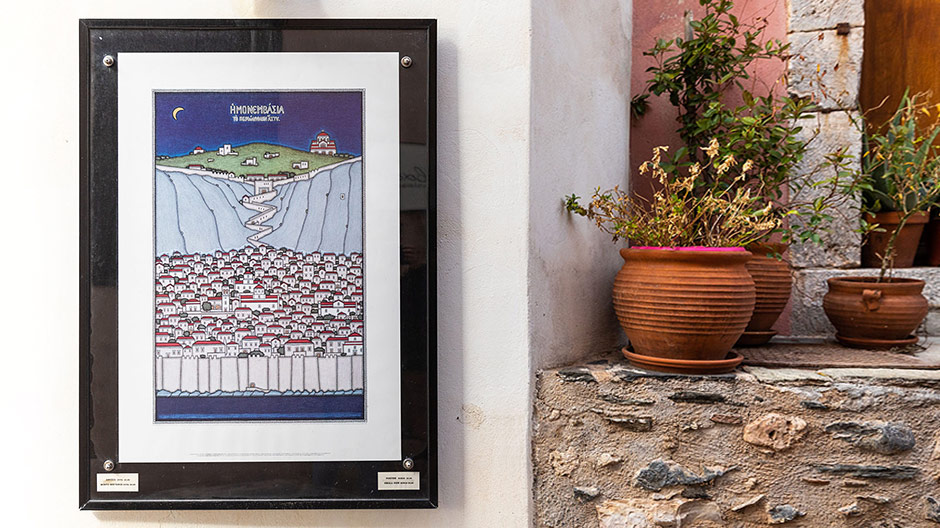
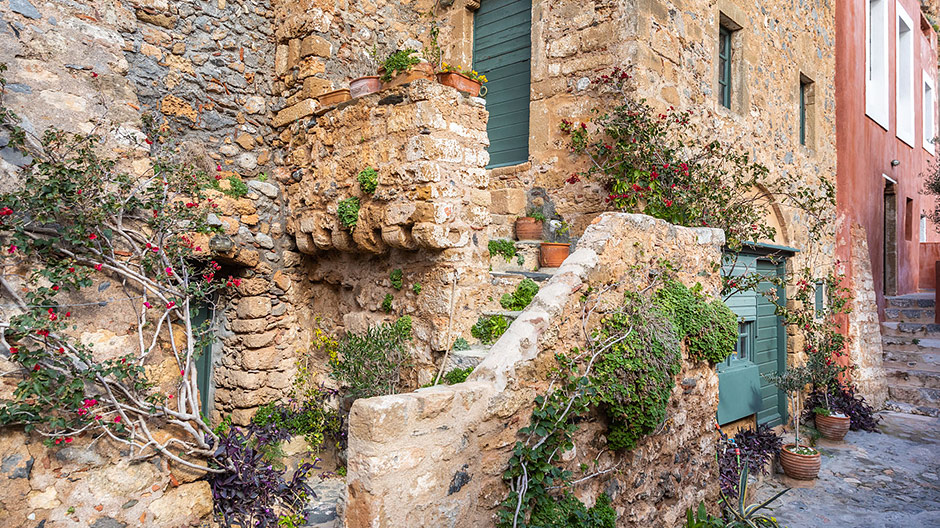
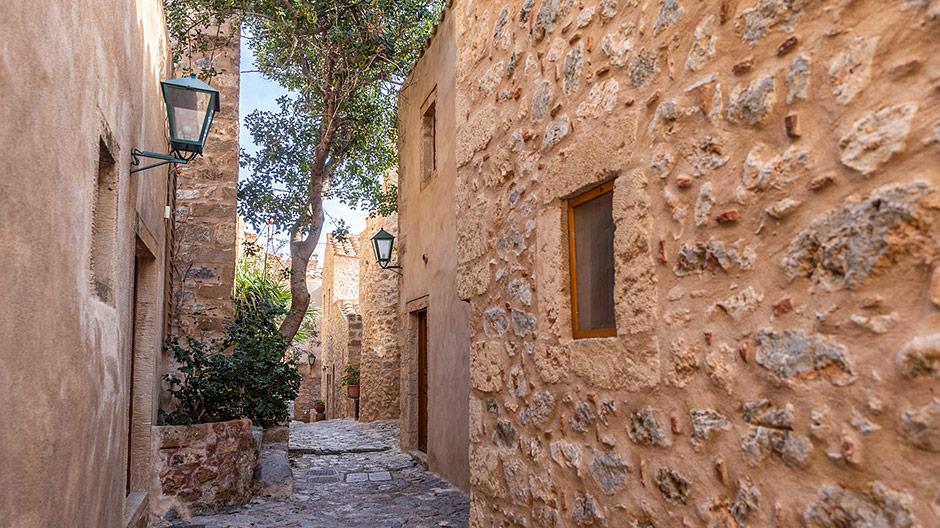
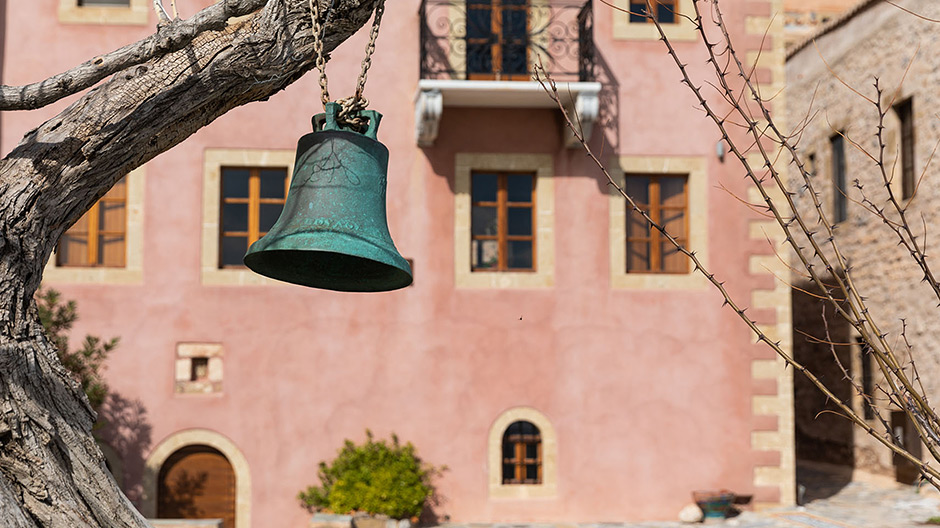
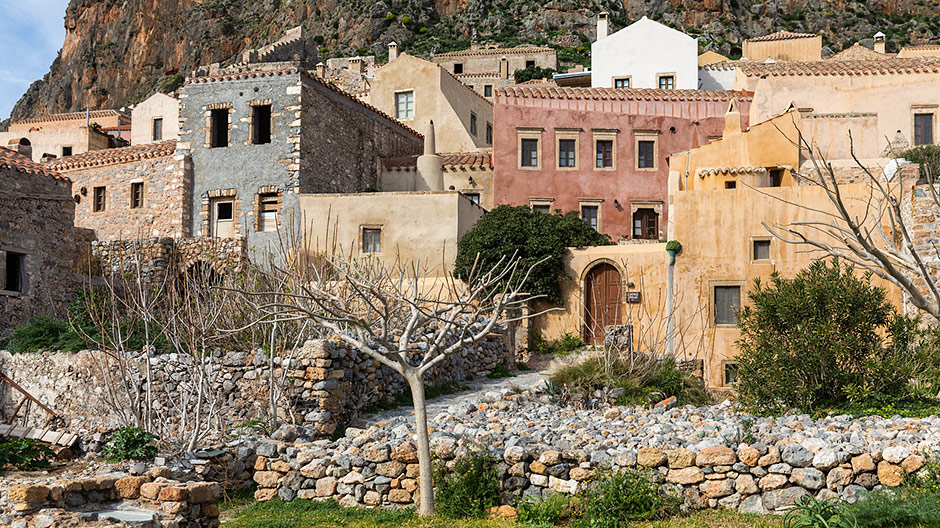
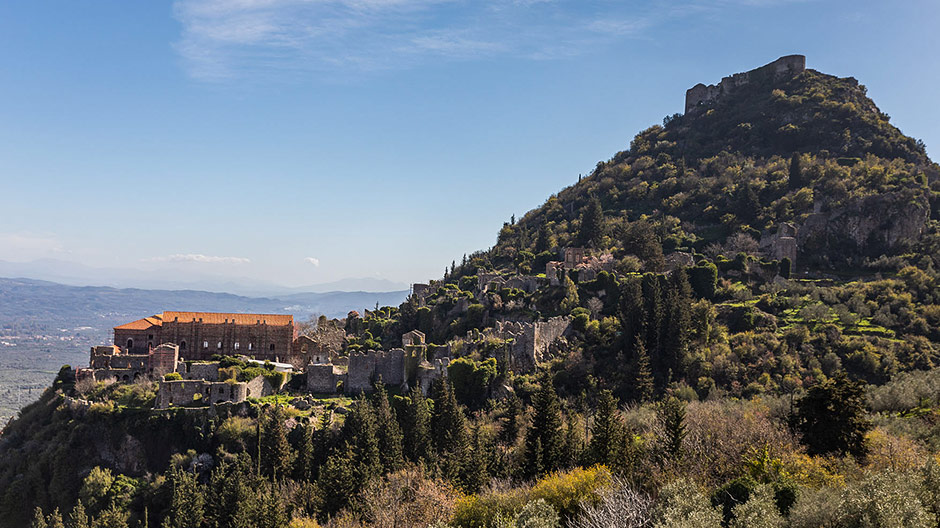
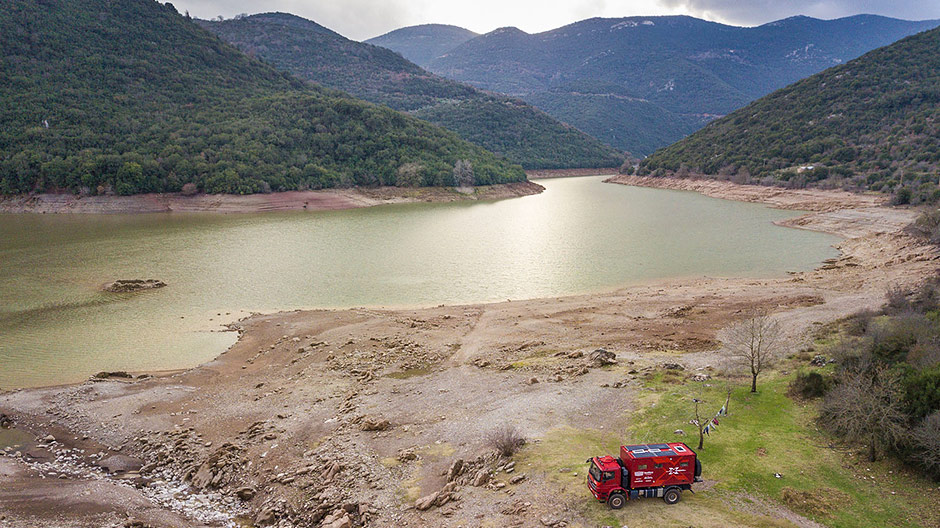
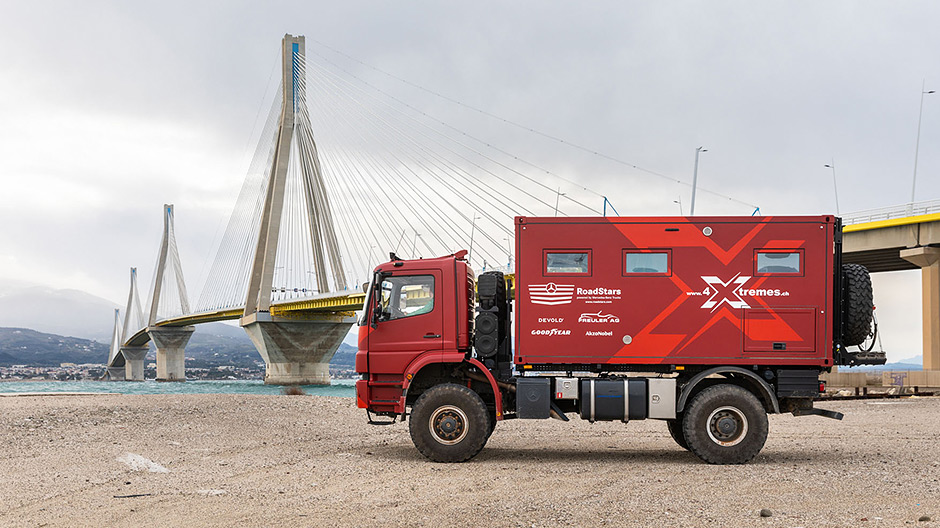
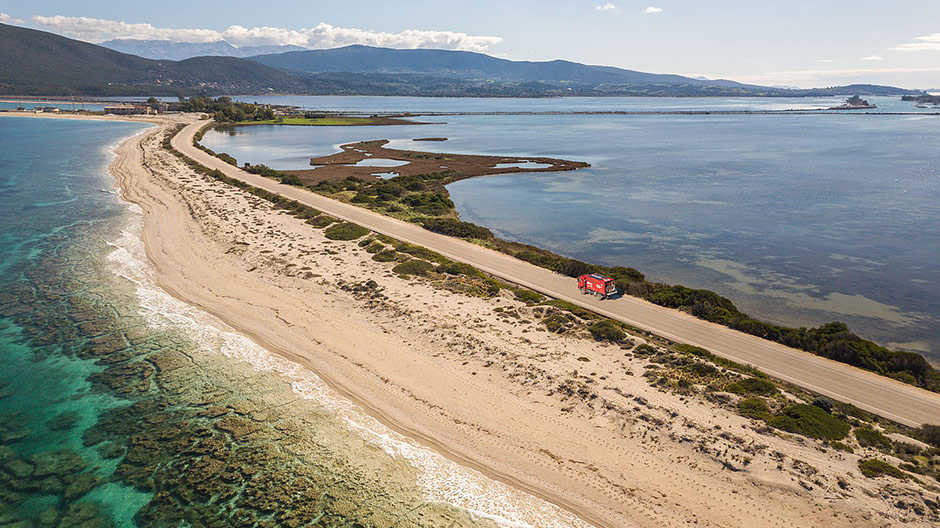

The next destination has been decided!
The road around the lake was overgrown on both sides and eroded in parts. We were relieved to reach a meadow where we could camp. The water level of the reservoir was so low that you could see the ruins of flooded houses. It was a fascinating look at long forgotten times.
Finally we left the Peloponnese again via the Rio-Andirrio bridge. Beforehand we considered what our next destination should be and now it’s been decided. To make the journey and be allowed to move freely once there, we need three negative Covid-19 tests, two ferry passages and a week quarantining in a hotel. That could lead to one or two surprises, so we don’t want to give too much away. You can read whether everything went according to plan in our next report.
4-Xtremes – The World Tour.
An unparalleled journey.
Andrea and Mike Kammermann have been on tour in their Axor for three years. "4-Xtremes – The World Tour" is the motto of the journey that the two Swiss nationals embarked on in mid-2020 and which they share with the RoadStars community. Keep up to date and don't miss out on any of the stunning destinations visited by the adventurous pair.
You can find the current parts from the “4-Xtremes – The World Tour” series here.
You can find the route of the trip before the crossing to South America here.
Photos and video: 4-Xtremes




Comment
Please log in to post a comment.
10 comments
Und dann noch eine gute Tat vollbracht: Hilfe beim festgefahrenen Pickup! 👍💯
Wir freuen uns schon auf den nächsten Bericht von euch und wünschen weiterhin eine gute Reise!
Und dann noch eine gute Tat vollbracht: Hilfe beim festgefahrenen Pickup! 👍💯
Wir freuen uns schon auf den nächsten Bericht von euch und wünschen weiterhin eine gute Reise!
Viele Grüsse von uns
Viele Grüsse von uns
Gute Reise und gute Fahrt!
Gute Reise und gute Fahrt!
Geniesst trotz der ganzen Ein-/Beschränkungen weiterhin eure "Freiheit" und kommt gut weiter, wo immer es Euch auch wieder hinverschlägt 👍
Gueti Reis, lG us Münchä ✋
Geniesst trotz der ganzen Ein-/Beschränkungen weiterhin eure "Freiheit" und kommt gut weiter, wo immer es Euch auch wieder hinverschlägt 👍
Gueti Reis, lG us Münchä ✋
hab den Bericht und die Bilder genossen😊
hab den Bericht und die Bilder genossen😊